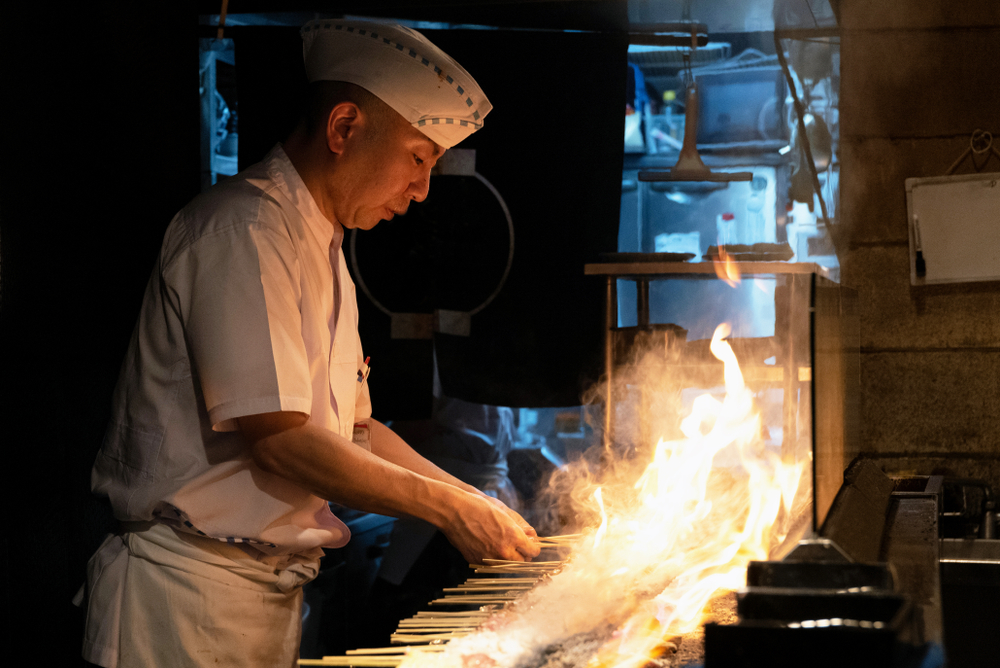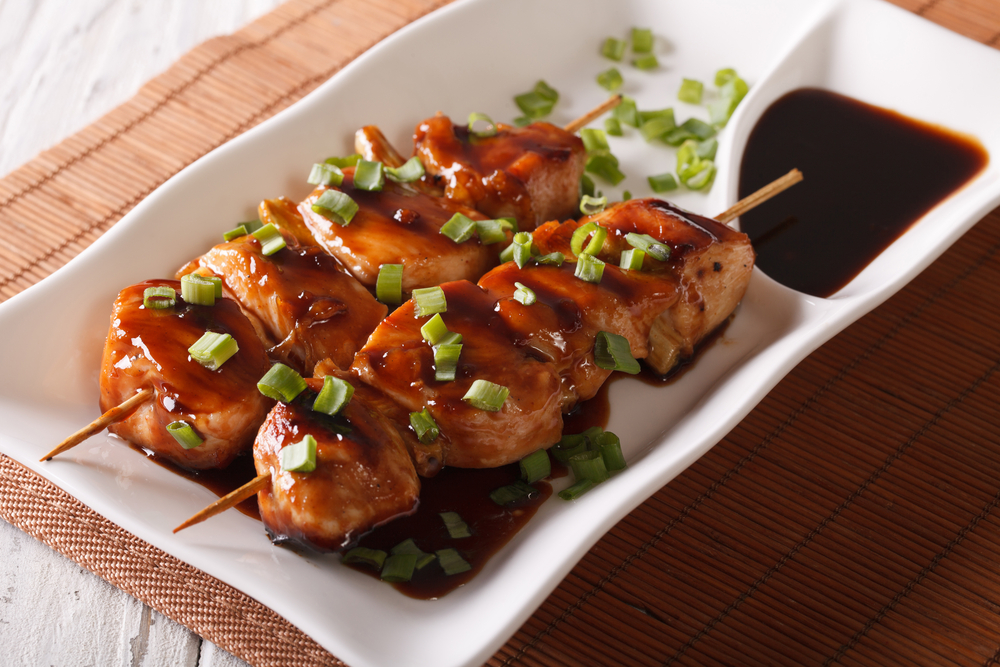We’re in the business of feeding large numbers of guests quickly, effectively, and with style. The goal is to provide tasty food that our guests love and also wow them with our presentation. We have to think about the serving styles and dining ware for every moment. This is the art of catering.
In order for all of the above to flow seamlessly, we first have to design menus that work. This is especially the case when writing menus for receptions and interactive events where the function and design of the event is focused on social interaction. At corporate events, for example, small plates and grazing tables are an effective style of service because they provide opportunities for variety and cultural experiences through food that everyone can enjoy together.
The art of Yakitori
I love introducing new menu items that stir conversation. One cooking technique I’ve really been interested in lately is Yakitori, a type of skewered chicken cooked via Yakimono: a Japanese-style cooking method that refers to grilled or pan-fried food generally served during the middle of the meal and not necessarily as appetizers. It requires many variations and methods based on fuel types, equipment, and seasonings.
In this case, yakitori represents all aspects of grilled chicken from wing to gizzard, heart to thigh. Generally, you order yakitori in stages and eat each individual piece when ready and at peak perfection.
Yakitori has grown from a seasonal consideration on a Kaiseki menu into a beloved Japanese cultural eating experience. These skewered chicken portions are grilled over burning Binchōtan charcoal and basted with a simple sweet and salty sauce. They are best enjoyed with drinks in a social setting such as a street café specializing in yakitori or an Izakaya or bar which may serve small plates.
The social aspect of yakitori translates well into events and functions that allows guests to share conversations over a small plates and beer, wine, or sake. Yakitori is not meant to be served in bulk presentation or as a buffet item. Japanese cuisine is focused on individual portions verses other southeastern Asian cuisines that are centered around shared dishes and individual servings of rice.
In order to best execute the Yakimono-style dishes, it is important to fully represent the traditions of this widely known but sometimes misunderstood type of cooking. Here is what you should be aware of when cooking:

Yakitori cooking style. Photo courtesy Chef John Reed
Execution
• Skewers are simply seasoned with salt and pepper or marinated for less than 30 minutes
• Portion size: 2 to 3 ounces per skewer
• Cuts of protein or vegetables should be uniform. Limit to one type per skewer
• Fish with skin should be poked with holes or small gashes to release fat and prevent curling
• Yakimono items are best cooked to order in small continuous batches as close to service as possible
• Continually turn items when on a grate or open coals to ensure even coloration
• Items can be grilled on flat griddles and are best known as Teppanyaki
• Basting sauce should be applied after the protein is set, and there is beading on the surface of the item. This is usually after the halfway point.
• Basted items should be turned once more to glaze
• Teriyaki is brushed continually during the cooking process to create a lacquer or layered glaze.

Chicken yakitori presentation. Photo courtesy Chef John Reed
Presentation
• Individual dishes or small plates (less than 7) with an odd number of pieces.
• Rectangular stone or hand-glazed dishes work best for skewers.
• Round pieces work well for non-skewer items such as miso-coated fish or shellfish cooked in the shell.
• Action stations are a great way of showcasing made-to-order items in smaller settings. Specialized cassette burners for yakitori are available from online retailers.
Garnishes and accompaniments
• Pickled items or vinegar for seasoning
• Lemon wedges
• Grilled onions or shishito peppers
• Finishing salts
Recipes and resources
Want to try your hand at Yakitori? Check out the following recipes that are available on my website:
• Cicerones Picks for an Izakaya Theme
• List of Skewering Techniques
Get more food and beverage ideas! Registration for Catersource 2020 is open! Click here for the latest information!



